Stargazing is a magical experience that has captivated people for centuries. From ancient civilizations to the modern day, humans have been amazed by the beauty of the night sky.
If you’re new to stargazing, or you are looking for new ways to describe it, this article is perfect for you!
In this article, you get
An accurate and poetic description of stargazing, including how to describe a night sky
A look at the benefits of stargazing
A description of the Milky Way and other galaxies
Billions of stars and a chance to make your constellation
A trip to the Moon, Planets, and shooting stars
Tips on how to make the most of your night sky adventure
By the end of this article, you’ll know how to describe stargazing, have a good night sky description, and more!
Let’s dive right in.
Recommended For You
HOW TO DESCRIBE STARGAZING: INTRODUCTION
Welcome to the beautiful world of stargazing!
Stargazing is a great way to explore the night sky and an activity anyone can enjoy. From spotting constellations and planets to admiring the majesty of the Milky Way, there are so many different things you can experience in the night sky.
FREE STARGAZING CHECKLIST
My 5-page Stargazing Checklist will enhance your astronomical observations.
Follow this free checklist to navigate the night sky with confidence, clarity, and a sense of preparedness for a rewarding stargazing experience.

Stargazing is a great way to relax and appreciate the beauty of the universe. It can be an incredibly calming and peaceful experience, and it can also be a great way to learn about astronomy. Be sure you read my article Is Stargazing Safe? and Best Time to See Stars.
This article will give you a definition of stargazing, followed by 13 ways to describe the beauty of stargazing.
- What are the Benefits of Stargazing?
- How to Describe the Beauty of Stargazing
- The Visual Beauty of Stargazing
- The Wonder of the Night Sky
- The Magnificence of the Milky Way
- Exploring Other Galaxies
- The Calmness and Serenity of Stargazing
- Creating Your Own Constellations
- Describing the Stars
- Describing the Constellations
- Describing the Planets and Moon
- Describing the Milky Way
- Describing Shooting Stars
So let’s start exploring!
WHAT IS STARGAZING?

Gazing at the stars is one of human history’s oldest and most beloved activities. It is the practice of observing, studying, and learning about the stars and other celestial bodies in the night sky.
You can stargaze with the unaided eye, but more advanced stargazers may use telescopes, binoculars, or even sophisticated astronomical equipment to observe and study the night sky.
As you look up into the star-filled night sky, you can learn about constellations, planets, and galaxies – all from your backyard!
Stargazing can also be a great way to relax and unwind after a long day, as it encourages us to take a break from our busy lives and appreciate the beauty of nature.
Stargazing Definition
Stargazing is the act of observing and studying celestial objects such as stars, planets, galaxies, and other celestial phenomena in the night sky using the naked eye, telescopes, binoculars, or other optical instruments. It is often pursued as a recreational or educational activity to appreciate the beauty and wonder of the universe.
1. WHAT ARE THE BENEFITS OF STARGAZING?
Stargazing is a great way to relax and reduce stress. Studies have shown that gazing at the stars can help you feel connected to nature and the universe, allowing you to take a step back from your day-to-day life and get a different perspective.
Stargazing can also spark your creativity and help you find new inspiration.
After looking up at the night sky, you’ll likely notice a sense of calmness and serenity that will carry over into your day-to-day life. You can even create your constellations by connecting stars in interesting patterns.
So take some time to sit back, relax, and enjoy the beauty of stargazing!
2. HOW TO DESCRIBE THE BEAUTY OF STARGAZING

You can easily spot each beautiful constellation from your frame of reference, seeming to waltz throughout the sky.
Stargazing enchants our minds and calms our spirits. It makes us kinder and more compassionate toward others. You can discover the full benefits of gazing at the stars and learn classic stargazing sights through a smaller telescope.
Even if you live in an area with significant light pollution, it’s still possible to spot stars at night and appreciate their beauty. By looking up into the night sky, you can feel connectedness and be inspired by its awe-inspiring beauty.
Describing the stars, constellations, planets, moon, Milky Way, and shooting stars will help you capture the magical feeling of stargazing in words.
3. THE VISUAL BEAUTY OF STARGAZING
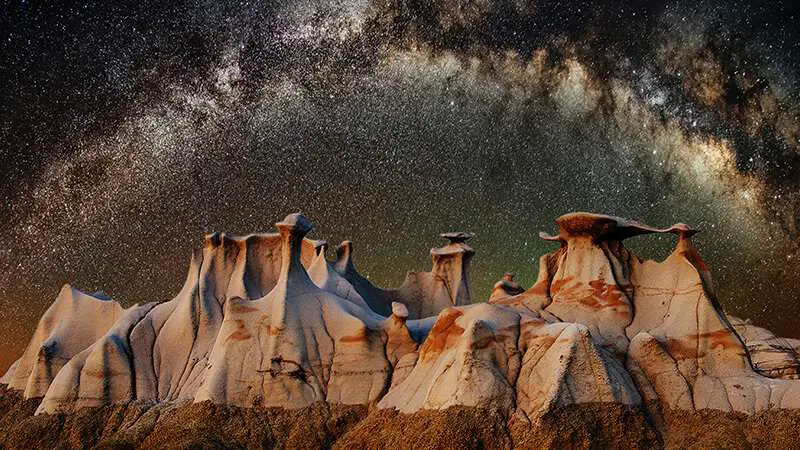
The night sky is full of stunning visuals, from the twinkling stars to the majestic Milky Way.
Beauty always fills the night sky, whether you’re looking up from a small town or a large city. When looking up at the stars, you can get lost in their sheer amount and awe at their beauty.
On a clear night, you can spot constellations like Orion and the Big Dipper and know they will always be there. You can also catch glimpses of planets like Venus, Jupiter, and Saturn and marvel at their brightness in the night sky.
You may even witness a shooting star or meteor shower if you’re lucky!
The visual beauty of stargazing is genuinely captivating and something you will never forget.
4. THE WONDER OF THE NIGHT SKY
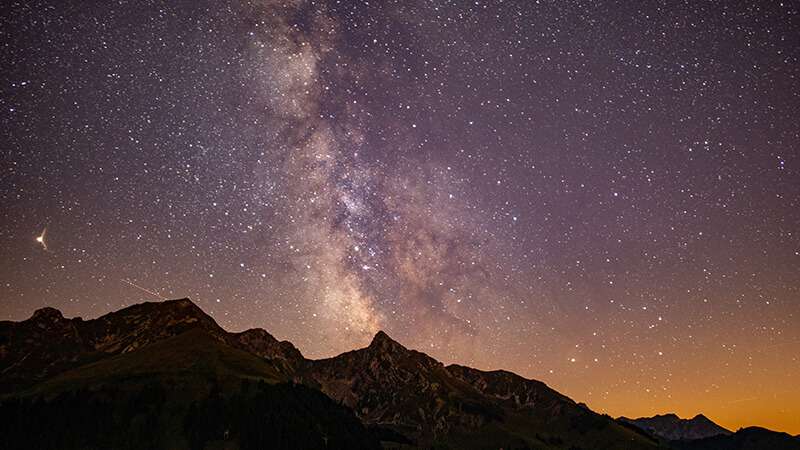
Stars, planets, and constellations fill the sky on a clear night. You can observe the beauty of the Milky Way stretching across the sky and watch as shooting stars streak across the darkness.
By learning about what you see in the night sky, you can better understand our galaxy and explore other galaxies! With stargazing, you can witness the beauty of our universe in a way that isn’t possible during the day.
It’s easy to be overwhelmed by the vastness and grandeur of it all. It’s a feeling that can give you peace, wonder, and appreciation for your place in the universe.
5. THE MAGNIFICENCE OF THE MILKY WAY
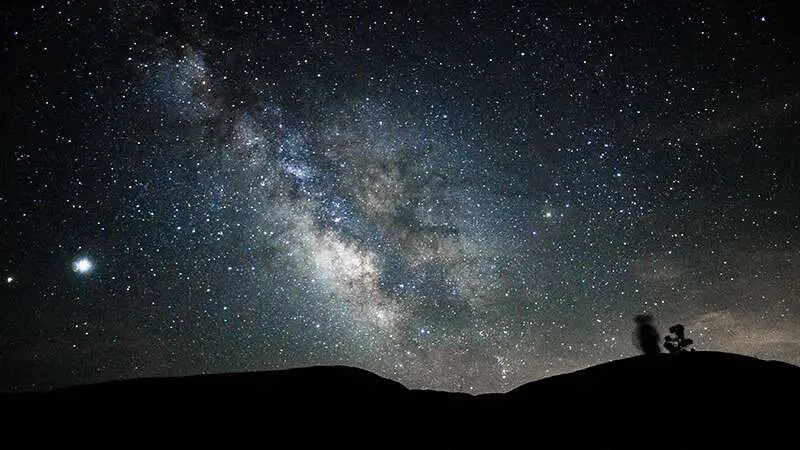
The Milky Way is an awe-inspiring sight to behold. It is a vast spiral of stars, dust, and gas stretching across the night sky. It’s truly breathtaking.
Every stargazer is amazed by the sheer magnitude of the Milky Way and its beauty. From meteor showers to nebulae, you always have a front-row seat toward our galactic center.
The boundless Milky Way is always fascinating. Standing beneath it and looking up at its countless stars creates a sense of calmness and serenity.
It’s best if you experienced it to appreciate it.
Whether looking up at the night sky with your own eyes or through a telescope, you can marvel at the sheer magnificence of the Milky Way.
6. EXPLORING OTHER GALAXIES

Exploring other galaxies is a great way to take your stargazing experience to the next level. While our Milky Way is home to hundreds of billions of stars, it’s nothing compared to the billions of galaxies in the universe.
With a powerful telescope, you can even view galaxies that are billions of light years away. You can marvel at their majestic spiral arms, filled with stars, gas, and dust, and be awed by their sheer size and distance from us.
Whether looking up at the night sky in your backyard or taking a trip to a dark-sky destination, you can take comfort in knowing that you are only one small part of a much larger universe.
7. THE CALMNESS AND SERENITY OF STARGAZING

The calmness and serenity of stargazing are undeniable. It’s a great way to escape the hustle and bustle of everyday life, allowing you to reconnect with nature and contemplate the universe’s wonders.
With no moonlight, the stars twinkle in the night sky, creating a peaceful atmosphere that can help you relax and reflect. As you take in the beauty of the night sky, an aura of tranquility surrounds you. You may even feel more kind and compassionate toward others.
Stargazing is a powerful reminder that we are all connected and can help you find peace amidst the chaos.
So take some time to explore the stars and reconnect with your inner peace.
8. CREATING YOUR OWN CONSTELLATIONS

Creating your own constellations is an activity that can help you get creative and have fun. You can start your story in the heavens by finding patterns in the stars.
While it may take a while to learn the constellations that are already up there, once you’ve mastered them, you can create your shapes and stories in the night sky. Once familiar with the stars, you can look for different shapes and figures among them, giving each its name and story.
By creating your constellations, you can explore the night sky in a new way.
9. DESCRIBING THE STARS

When you take the time to look up at the night sky and focus on the stars, it can feel like you’re looking into a timeless abyss.
The stars sparkle and twinkle, each one unique in its way. Some shine brighter than others, while some are faint and barely visible. You can imagine what stories each star could tell and how long their light has been traveling for you to see them.
It’s incredible to think about all the other galaxies and how small we must seem from out there.
Stargazing is a humbling experience, and it is awe-inspiring to witness the greatness of what lies beyond our world.
10. DESCRIBING THE CONSTELLATIONS
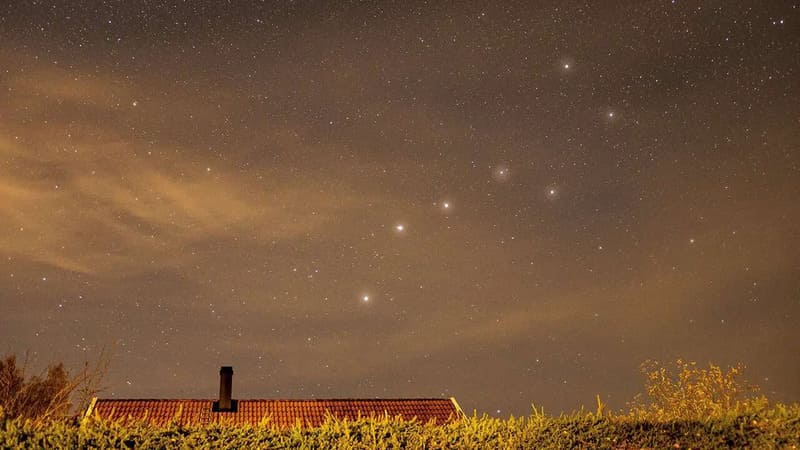
Once you have learned the constellations, you can begin to describe their beauty. Each constellation has its unique shape and pattern of stars, which look even more spectacular when you view them in the night sky.
The Big Dipper, for example, is a group of seven bright stars that form a dipper-like shape.
The Pleiades, or Seven Sisters, is a grouping of stars that looks like a small cloud in the night sky.
Orion is one of the most recognizable constellations and features three bright stars in a row, followed by two fainter stars in a row, which creates the shape of a hunter’s belt.
There are many other constellations, each with its unique beauty and story.
11. DESCRIBING THE PLANETS AND MOON
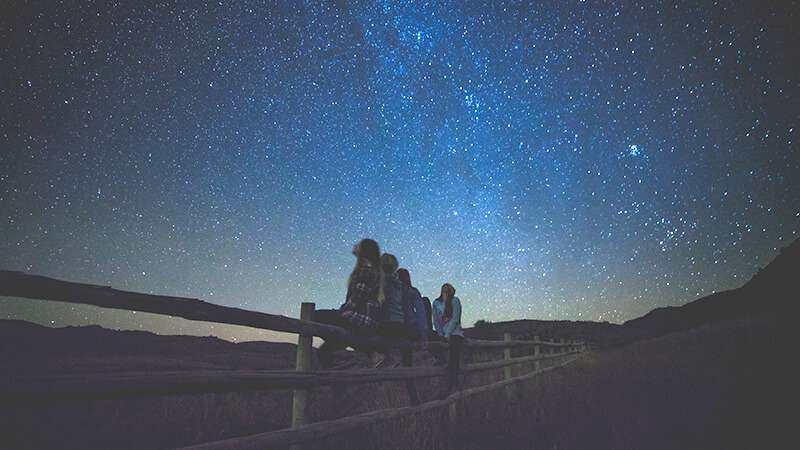
When you take the time to look up into the night sky, you can see the planets and moons that appear like dots of light spread across the heavens. Depending on the time of year, you can view some of the brighter planets in our solar system, such as Venus, Mars, Jupiter, and Saturn.
The moon is also a stunning sight in the night sky and provides an ever-changing display of its phases.
The planets are all different sizes and colors, which can make for a beautiful display when seen through a telescope. The moon has its unique beauty, with its craters and mountains illuminated by sunlight reflecting off its surface.
Seeing these wonders can fill you with awe and admiration for the beauty of our universe!
12. DESCRIBING THE MILKY WAY
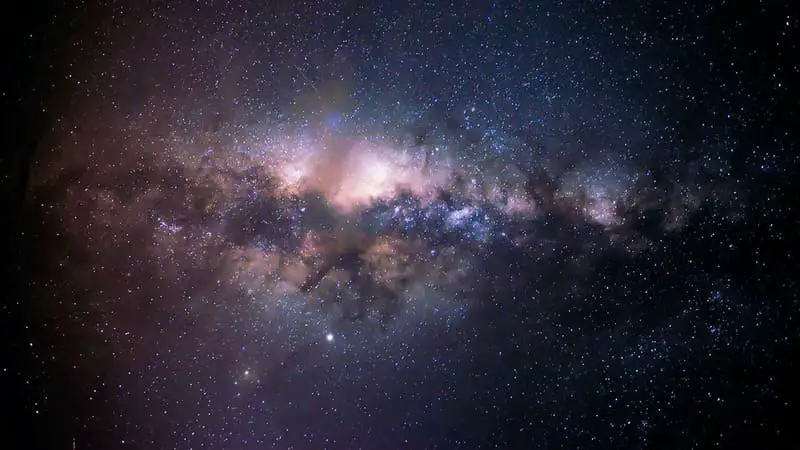
You can also take in the beauty of the Milky Way as you stargaze. The Milky Way is a spiral galaxy stretching across 100,000 light-years. It appears like a bright cloud dotted with millions of stars that twinkle like diamonds in the night sky.
Looking at it, you can be overwhelmed by its beauty and magnificence. With some imagination and knowledge of astronomy, you can easily spot each constellation and appreciate its intricate structure.
Stargazing is not only a visual experience but also an intellectual one. The Milky Way’s complexity allows you to explore and discover new aspects of space whenever you look up at the night sky.
13. DESCRIBING SHOOTING STARS

When describing shooting stars, you can begin by pointing out that they are not stars but meteors passing through the atmosphere.
You can explain how these meteors flash and flicker in the night sky, creating a beautiful yet fleeting show. You can also talk about how these shooting stars are often called “falling stars,” but this is an antiquated and inaccurate term.
Talk about how these meteors often appear in streaks of light, which is why they are called “shooting stars.”
And you can finish your description by noting how lucky you feel to witness such a magical sight with your own eyes.
how to describe the night sky: Bonus
Crafting a beautiful description of the night sky involves using vivid language and poetic imagery to capture its celestial wonders. There are various ways to describe the night sky, from portraying the velvety darkness adorned with shimmering stars to detailing the subtle hues of a setting crescent moon. In describing the night sky, you can evoke a sense of wonder and awe!
SUMMARY
Thank you for reading my article, “How to describe stargazing.”
Stargazing is an activity anyone can enjoy. It’s a great way to explore the night sky.
You can experience many different things in the night sky, from observing constellations and planets to admiring the majestic views of the Milky Way.
Stargazing is a great way to relax and appreciate the beauty of the universe.
It can be an incredibly calming and peaceful experience and a great way to learn about astronomy.




